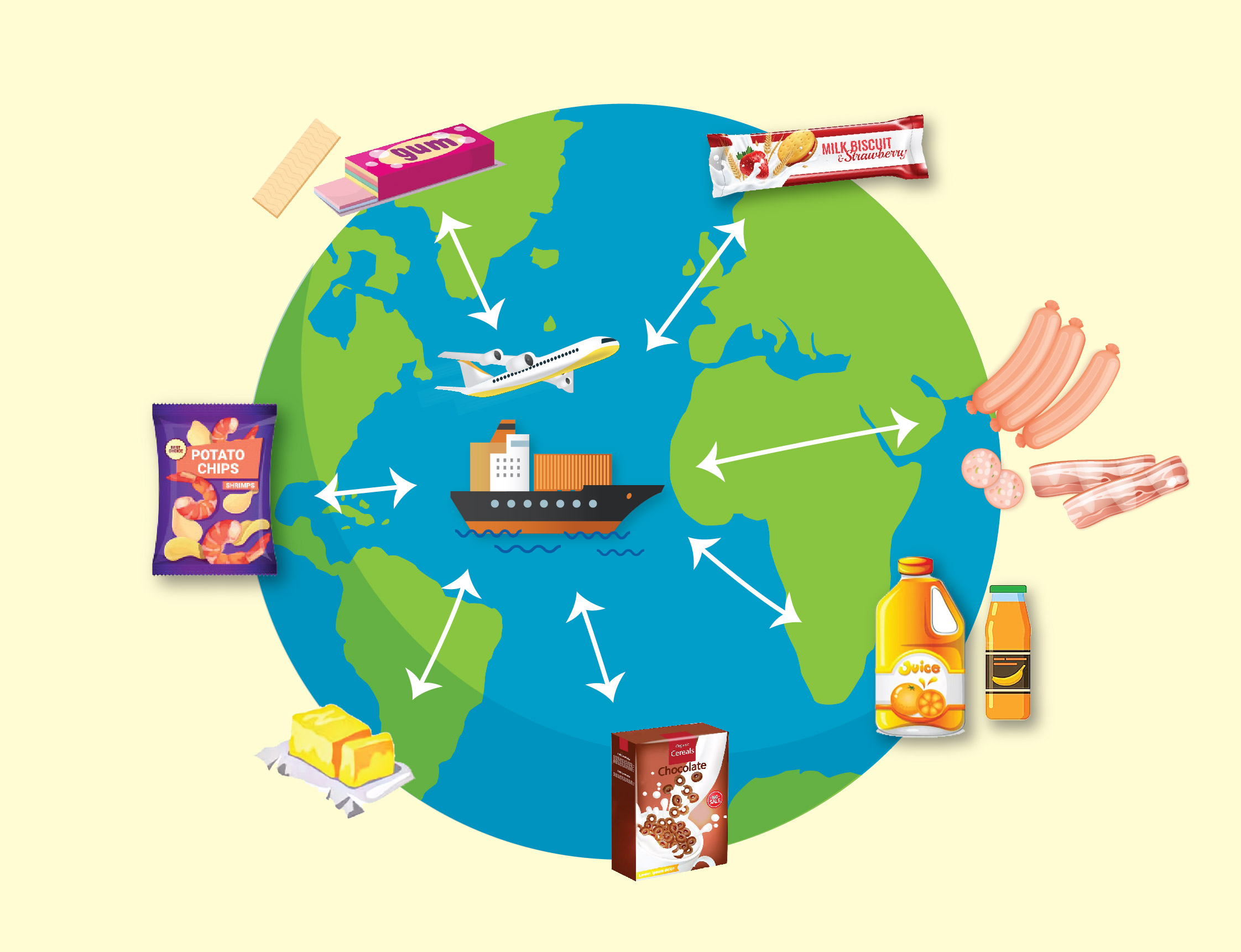
Food Safety Focus (199th Issue, February 2023)–Article 2
Should We Worry about Preservatives and Antioxidants in Food – Or Should We Not?
Reported by Ms. Sosanna WONG, Scientific Officer,
Risk Assessment Section, Centre for Food Safety
Imagine there are no preservatives and antioxidants. Consumers may be offered less choice of foods because many processed foods contain these additives. Some common examples are luncheon meat, bacon, margarine, sauces, bread, juice, snack etc. Many people, however, may not be aware that some food, because of their nature, require the use of preservation techniques to help maintain their safety and freshness. In meeting the demand for a safe, convenient and stable supply of food, the role of preservatives and antioxidants is even getting more indispensable.
Why are Preservatives and Antioxidants Added to Food?
The history of food preservation can be traced back to the ancient times when sugar was used to preserve fruit and salt was used to preserve meat to keep harvested food edible over a longer period of time. While some may find preservatives and antioxidants similar, they perform distinct functions in foods by combating two major enemies of our foods, microbes and oxidation, respectively.
Preservatives prevent spoilage of foods by inhibiting the growth of microbes. Harmful bacteria can invade our foods and, if consumed, can cause us to become critically ill. Clostridium botulinum, for example, produces very potent neurotoxin that can cause life-threatening botulism. Preservatives can inhibit the growth of this bacterium in the manufacturing of food such as cured meat. Other microbes like fungi and yeasts can also cause food spoilage and produce toxin that is harmful to our health. Therefore, in addition to maintaining the quality of foods, the use of preservatives is particularly important to prevent foodborne illness.
Antioxidants, on the other hand, protect foods against deterioration caused by oxidation. When exposed to oxygen in the air, oxidation may occur that cause undesirable flavour and colour changes in foods. This is where antioxidants come into play to prevent fats and oils from turning rancid and developing an unpleasant off-flavour, as well as slow down discoloration of fruits and vegetables.
In recent years, food production has undergone tremendous advances, largely driven by consumer demands and globalisation. Large-scale, cross-border food processing is an important part of the global food supply chain. Food additives are used to help ensuring that processed food stays safe and in good condition during its journey from processing plants in one part of the world to hands of faraway consumers in yet another part of the world. Without preservatives and antioxidants, people will not have as many food options, many foods would be more expensive, more people will not have sufficient access to safe food, while more food would be wasted. More importantly, many people might have gotten sick from consumption of spoiled food.

Figure 2. Preservatives and antioxidants help ensure processed food remains safe and in good condition throughout its journey from one part of the world to consumers in another part of the world
Are Preservatives and Antioxidants Safe for Consumption?
Despite their benefits in improving food safety and reducing food waste, preservatives and antioxidants are permitted for use in food only after they have undergone stringent evaluation and are found not to present an appreciable health risk to consumers at the levels of use. At the international level, the safety assessment is conducted by the FAO/WHO Expert Committee on Food Additives (JECFA), and food additive standards are developed by the FAO/WHO Codex Alimentarius Commission (Codex) based on sound scientific principles with a view to protecting the health of consumers and ensuring fair international food trade.
How are Preservatives and Antioxidants Regulated in Hong Kong?
In Hong Kong, the Preservatives in Food Regulation (Cap. 132BD) specifies the types of permitted preservatives and antioxidants and their maximum permitted levels in specified foods.
In addition, food manufactures should practice Good Manufacturing Practice and apply preservatives and antioxidants in a way that only the minimum amount is added to achieve the desired technological effect.
How to Make an Informed Choice?
Consumers can make an informed choice and check if preservatives and antioxidants are present by reading the ingredient list on the food package. According to the Food and Drugs (Composition and Labelling) Regulations (Cap. 132W), if a food additive, including preservatives and antioxidants, is used in a prepackaged food, it must be listed by its functional class together with its specific name or identification number in the ingredient list on the food label.


